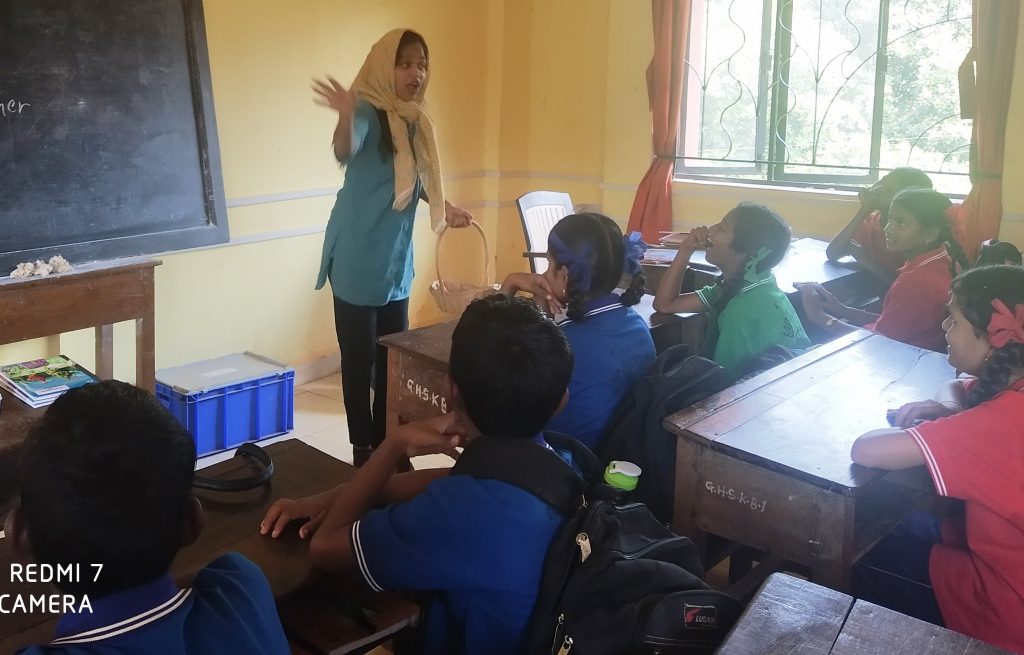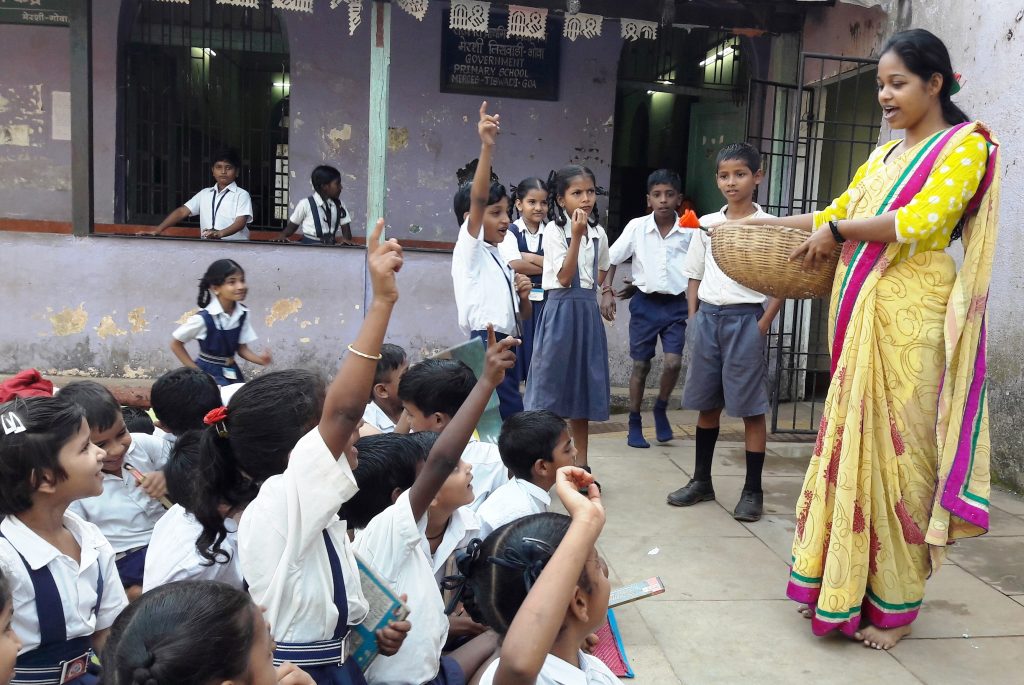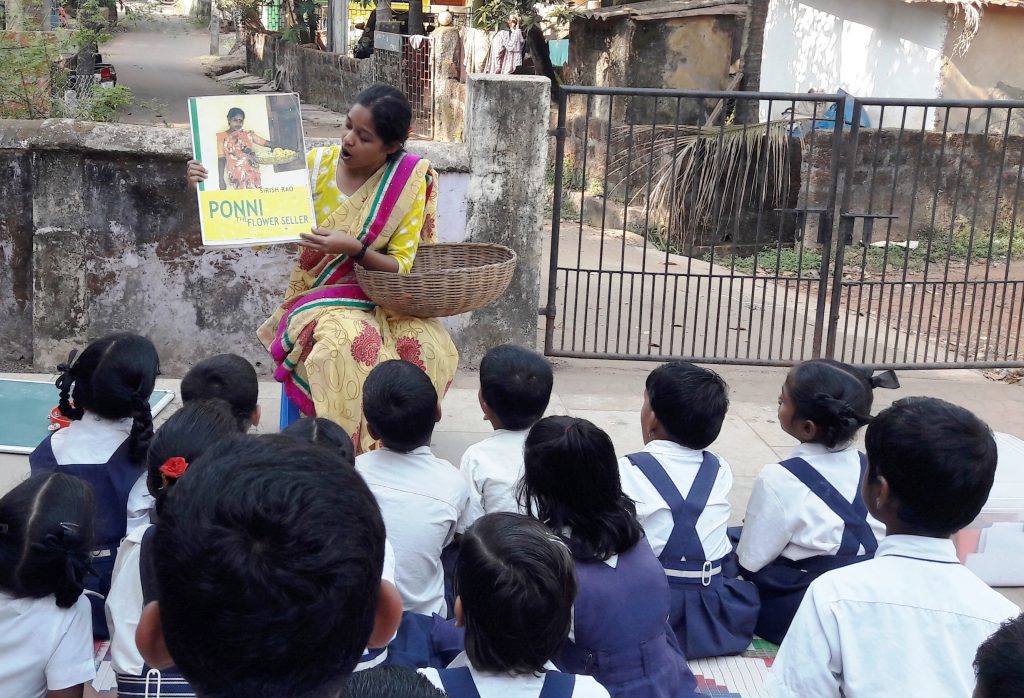While stories are loved by all, the way they are told and read have a wonderful effect on the story experience which is reflected in children’s responses. Our recent exploration in storytelling, for the children of our Libraries in Schools (LiS) Program, has been dressing up as a character from the story to be told.
All the Resource Persons dressed up as different characters for different stories. The two characters that I have really enjoyed dressing up as are Little Masha, from the story ‘Little Masha and Misha the Bear’ by James Riordan and illustrated by Alexi Natchev and Ponni, from ‘Ponni The Flower Seller’ by Suresh Rao. I chose these books as there was a good scope of dressing up as these are interesting and strong female characters.
Dressing up as a character does not need much, just the costume, a liking for the character and the story itself. When I dressed up as Masha, the children of Std 5 of JJR Kudchire school, were joyous to see the story acted out, and not just Read Aloud as usual. Jewel became the character of Misha the Bear. We acted out the entire story and used the classroom as an imaginary forest which was the setting of the story. The children empathized with the character, giving ideas on how Masha could be free from Misha the Bear who made her do all the work. They thought Masha could dig a tunnel, hide behind the curtain or run away. The theme of the story was that size does not matter and it was Masha’s wit that saw her through her problem.
Similarly, when I dressed as Ponni the flower seller, the children of std 1+2 from Government Primary School, Merces, asked me, as the character, “Kaunse fool laye hain?” (What types of flowers are you carrying?). They were excited to know how Ponni spends her day and wondered what she might do after she finishes selling her flowers and goes home. They also shared about the other flower sellers that they know and told how they use flowers for different things like offering to God, decorating the house and tying in the hair.
While exploring the dressing up as a character as a way of telling the story, I felt that for the children the character comes alive and becomes someone that they can talk to and interact with. This makes it more relatable, thus holding their attention and maybe forming a bond with the character. For the Resource Person, the experience changes from just telling the story to being part of the story. It also becomes easier to get the children into the story. It makes the story time a fun time.




